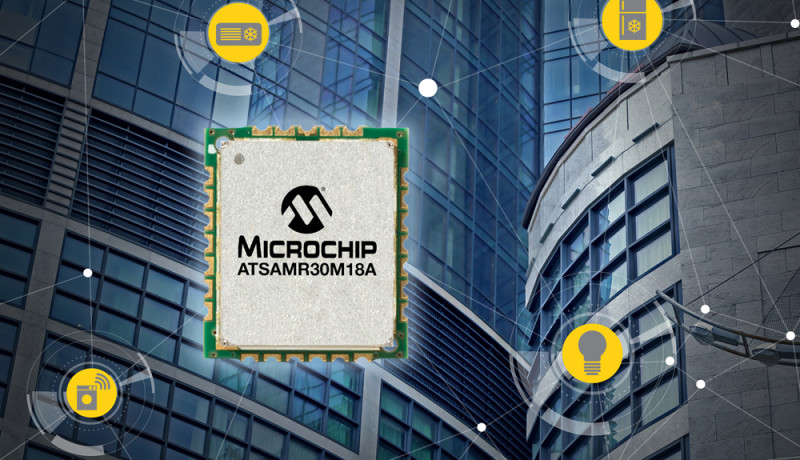Develop low-power wireless sensor nodes with the industry’s smallest regulatory-certified sub-GHz module
February 26, 2019
on
on

|
Key Facts:
|
Microchip announces the industry’s smallest IEEE 802.15.4-compliant module that combines an ultra-low-power microcontroller (MCU) with a sub-GHz radio, accelerating time to market and providing long-lasting battery life in wireless-networked sensors. At half the size of the next smallest module on the market, the SAM R30 module meets the needs of space-conscious designs such as home automation sensors and controls.
Based on IEEE 802.15.4, the SAM R30 module supports proprietary networks that can be easily customised and configured. This is ideal for applications where interoperability is not desired due to their inherent vulnerability to remote attacks, such as alarm systems, building automation, smart cities and industrial sensor networks. A key advantage of an IEEE 802.15.4-based network is that member devices can sleep for extended periods of time and remain part of the network. The SAM R30 module features ultra-low-power sleep modes, with wake from General-Purpose Input/Output (GPIO) or its built-in Real-Time Clock (RTC) while consuming approximately 800 nA. Devices can sleep for years, only waking as needed to transmit data.
Compact sensor designs can significantly reduce installation components and simplify device deployment. Applications often rely on simple double-sided tape for mounting, which makes decreasing the size of the sensor a priority. The SAM R30 module measures just 12.7 x 11 mm and includes the necessary features to drive any remote connected sensor, thereby eliminating the need for a separate MCU in the design. The device also offers up to 256 kilobytes (KB) of Flash and 40 KB of RAM, as well as serial data interfaces, USB, and digital and analogue I/O for advanced sensor development.
Read full article
Hide full article


Discussion (0 comments)